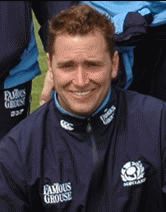The traditional Maori dance is a distinctive pre-match ritual of the visitors.
But the All Blacks have introduced a new version entitled 'Kapa o Pango' where the team symbolically run their fingers across their throats at the end of the sequence.
Discussion ensued over whether the Haka should be changed or even banned following the tourists' 23-19 triumph over England at Twickenham at the weekend.
But the Glasgow Warriors stand-off insists the ritual must not be removed from the international scene.
Dan said: "I love it. Whatever I am doing or wherever I am, I stop when I see the Haka.
"The hairs on the back of my neck stand up because it is one of the most incredible sights in sport.
"Everyone who watches it feels exactly the same when they see and hear it because it is a real buzz and I am sure it gives the All Blacks a buzz as well.
"I don't think it should be stopped - it would spoil things.
"It is a fantastic part of of the All Black tradition and as a rugby fan as well as a player, I would be very disappointed if it was stopped."











